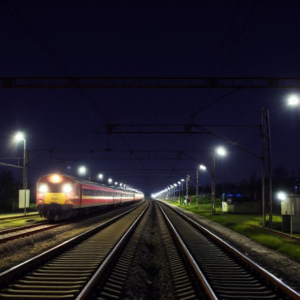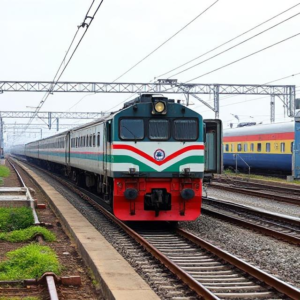What is Gauge?
In the context of railways, the gauge refers to the distance between the two rails on the railway track. Different countries, and even different railways within a country, use different gauges. The size of the track gauge affects the type of trains that can run on it and the speed at which they travel.

Types of Track Gauges in India
India uses three main types of track gauges for its railways. These are:
- Broad Gauge (BG):
- Width: The distance between the rails is 1,676 mm (5 feet 6 inches).
- Most Common: Broad Gauge is the most commonly used track gauge in India. Almost 60-70% of the railway tracks in India are Broad Gauge.
- Why it’s Used: Broad Gauge allows for heavier and faster trains. Since the distance between the rails is wider, the trains can carry more passengers and freight, and they can travel at higher speeds. Most of the major long-distance trains and high-speed trains in India run on Broad Gauge.
- Meter Gauge (MG):
- Width: The distance between the rails is 1,000 mm (1 meter).
- Less Common: Meter Gauge is used less frequently these days but is still found in some parts of India, especially in hilly or remote areas.
- Why it’s Used: Meter Gauge is more suitable for areas where the land is limited or where it is too expensive to lay Broad Gauge tracks. Trains on Meter Gauge tracks are generally slower and carry fewer passengers, but they are still useful in certain areas.
- Narrow Gauge (NG):
- Width: The distance between the rails is less than 1,000 mm. Common Narrow Gauges are 762 mm (2 feet 6 inches) and 610 mm (2 feet).
- Small and Specialized: Narrow Gauge tracks are usually found in very remote or hilly areas. These tracks are smaller, and the trains running on them are lighter and slower.
- Why it’s Used: Narrow Gauge is used in regions where space is tight or where the terrain is difficult. For example, in the hilly regions of Shimla, Darjeeling, and the Nilgiris, Narrow Gauge trains are popular.
Why Are There Different Gauges?
- Geography: Different types of tracks are used based on the terrain and space available. Hilly and mountainous regions, or places with limited land, might need Narrow or Meter Gauge.
- Cost: Laying down Broad Gauge tracks is more expensive, so for less important or remote areas, Meter or Narrow Gauge tracks are chosen as they cost less to build.
- Speed and Capacity: Broad Gauge tracks allow trains to run faster and carry more passengers or cargo, which is why they are used for most major routes. Meter and Narrow Gauge are usually slower and carry fewer people or goods, making them more suited to specific regions or purposes.
Current Trends:
- Gauge Conversion: In recent years, there has been an effort to convert many Meter and Narrow Gauge tracks to Broad Gauge. This helps increase the speed of trains and allows for the use of more modern, faster trains.
- High-Speed Rail Projects: India is also planning to develop high-speed rail networks on Broad Gauge tracks, which will allow trains to run at even higher speeds (like the Mumbai-Ahmedabad Bullet Train project).
Summary of Gauges in India:
- Broad Gauge (BG): Most common (1,676 mm) for fast and heavy trains.
- Meter Gauge (MG): Smaller (1,000 mm), found in less-developed or hilly areas.
- Narrow Gauge (NG): Smallest (less than 1,000 mm), used in remote or very hilly regions.
In simple terms, the gauge system determines the width between the rails, and different gauges are used for different types of trains and regions, depending on the terrain, speed, and capacity needed.
Keywords: Indian Railway, Railway











